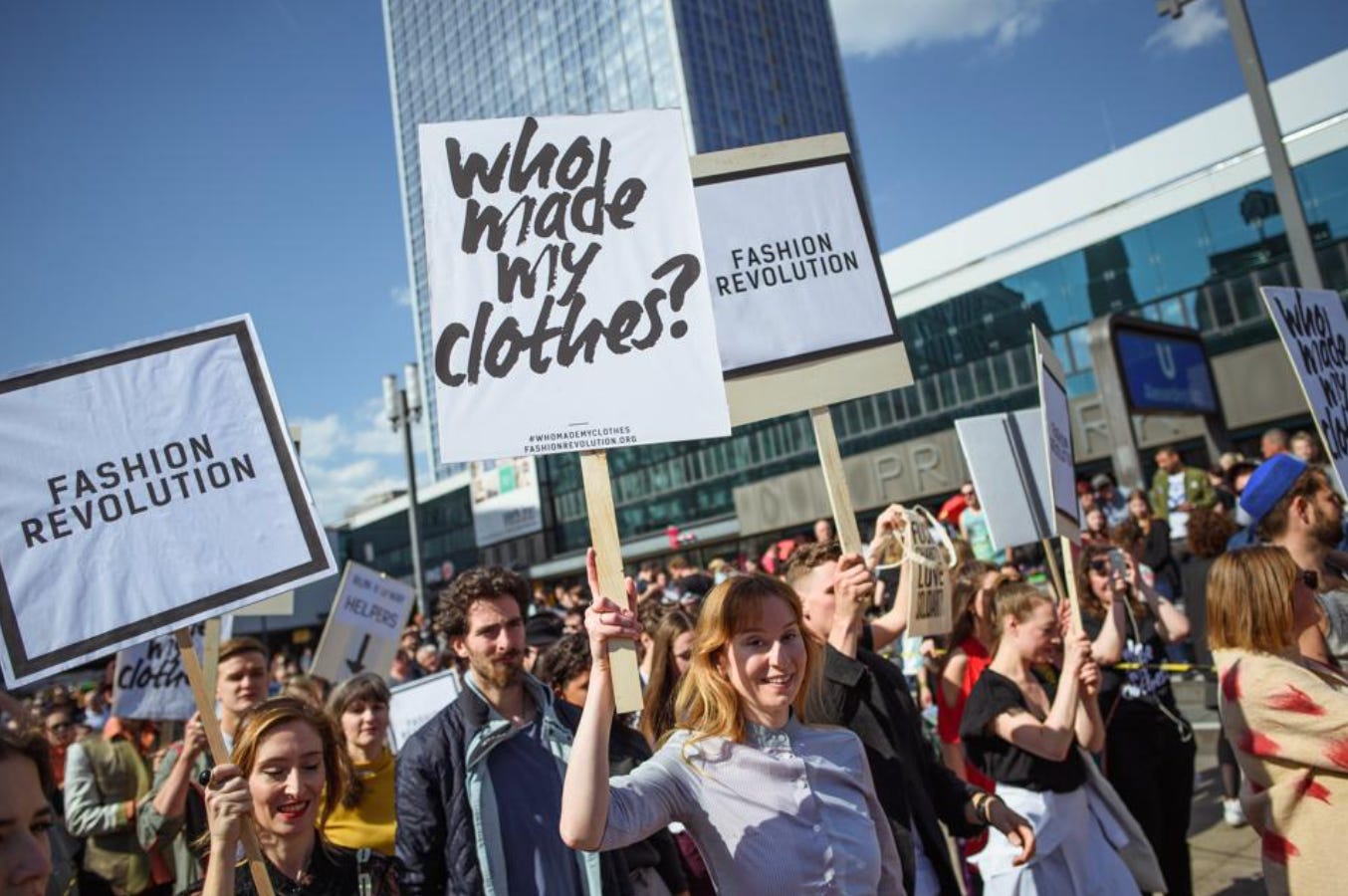Today, April 24, 2024, marks the eleventh anniversary of the collapse of Rana Plaza in Dhaka, Bangladesh. With a death toll of 1,134 people and approximately 2,500 more injured, this disaster is known as the deadliest accidental structural failure of the 21st century. Though the collapse was labeled as an accident, the choices to bypass the permits to construct on the premises and require the garment factory employees to continue working after several safety hazards were reported were two deliberate and very standard practices in the exploitative world of fast fashion.

Eleven years later, there is still little justice for the victims and their families. The 41 people accused of murder in the collapse of Rana Plaza are still awaiting trial as of January 2024. Only a few people have been granted compensation by companies that outsourced labor from the Bangladeshi garment factory. Families who could provide DNA evidence of their deceased relatives were given a mere $200 from Primark, and only seven of the factory's 28 international retailers contributed to the Rana Plaza Donor's Trust Fund within the first year following the collapse.
This imperial fashion system heavily relies on what Karl Marx described as commodity fetishism – a consumer's perception of a product that is completely alienated from the labor, and thus laborers, that it took to make said product. It's what makes the commodity desirable. For the very same reason the upper class slept on a higher deck away from the proletarian servants and steerage on the Titanic, so does the fashion industry create this laborless illusion to put our minds at ease in consuming one's exploitation. However, this infrastructure, too, is a sinking ship, and whether you can see the laborers or not, blood and sweat will stain white fabric.

Where previously Western companies were able to hide their sweatshops and garment dumps in the Global South away from the vision of their domestic consumers, the age of social technology has made it an impossibility to look away from labor exploitation. Organizations such as Fashion Revolution have started global campaigns to end human and environmental abuse in the fast fashion industry and educate consumers on garment traceability. Digital fashion communities on TikTok and Twitter have dedicated voices who strive to hold both the fashion industry and fashion consumers accountable for their unethical means of production and consumption.
However, this community-led exposé has created a cultural phenomenon where the internet adopts the language of accessibility and democratization as a means of morally absolving itself from its contribution to the fashion system. In a world where you are not given the choice to ignore the victims of the fashion industry, the only way to remain complacent in your contribution is to convince yourself that you are one.
Anti-capitalist phrases like "there is no ethical consumption under capitalism," once serving as a reminder only to consume what is necessary, have been bastardized into a shallow rationalization for every excessive purchase — whether you are spending a paycheck on groceries or a Zara haul, the likelihood that underpaid farmers and factory workers produced both commodities is high, so you might as well buy both.
False dilemma fallacies like "I am working class too, and I cannot afford luxury fashion, so clearly my only option is to buy dupes from Fashion Nova" have also become increasingly popular. These statements parade as an act of democratization, but they are nothing more than a wolf in Shein's clothing. Entitlement to fashion, specifically pieces that fast fashion retailers stole from luxury brands (which frequently means independent designers with fair pricing), is far from class rebellion; instead, it is an illusory way of inserting oneself into a higher status in the preexisting class system.
This superficial form of online democracy starts and stops with the self. Much like the ongoing antitrust Hermés Birkin lawsuit, this outrage is based on one's own position in the exclusivity that drives the fashion industry – it is a bad thing until someone names the right price. But this markdown cannot forsake its social semiotics; after all, that's what makes the product desirable. Whether it is a Birkin or a convincing designer dupe, both commodities exist to convince the world that the person wearing it is worthy of doing so.
But the harsh reality is that no one is worthy of fashion. So long as fashion's desirability is tethered to status performance, democratization is an impossibility. And if you cannot pay to perform with your paycheck, why should someone else pay with their life?




This is an interesting article
Very interesting!